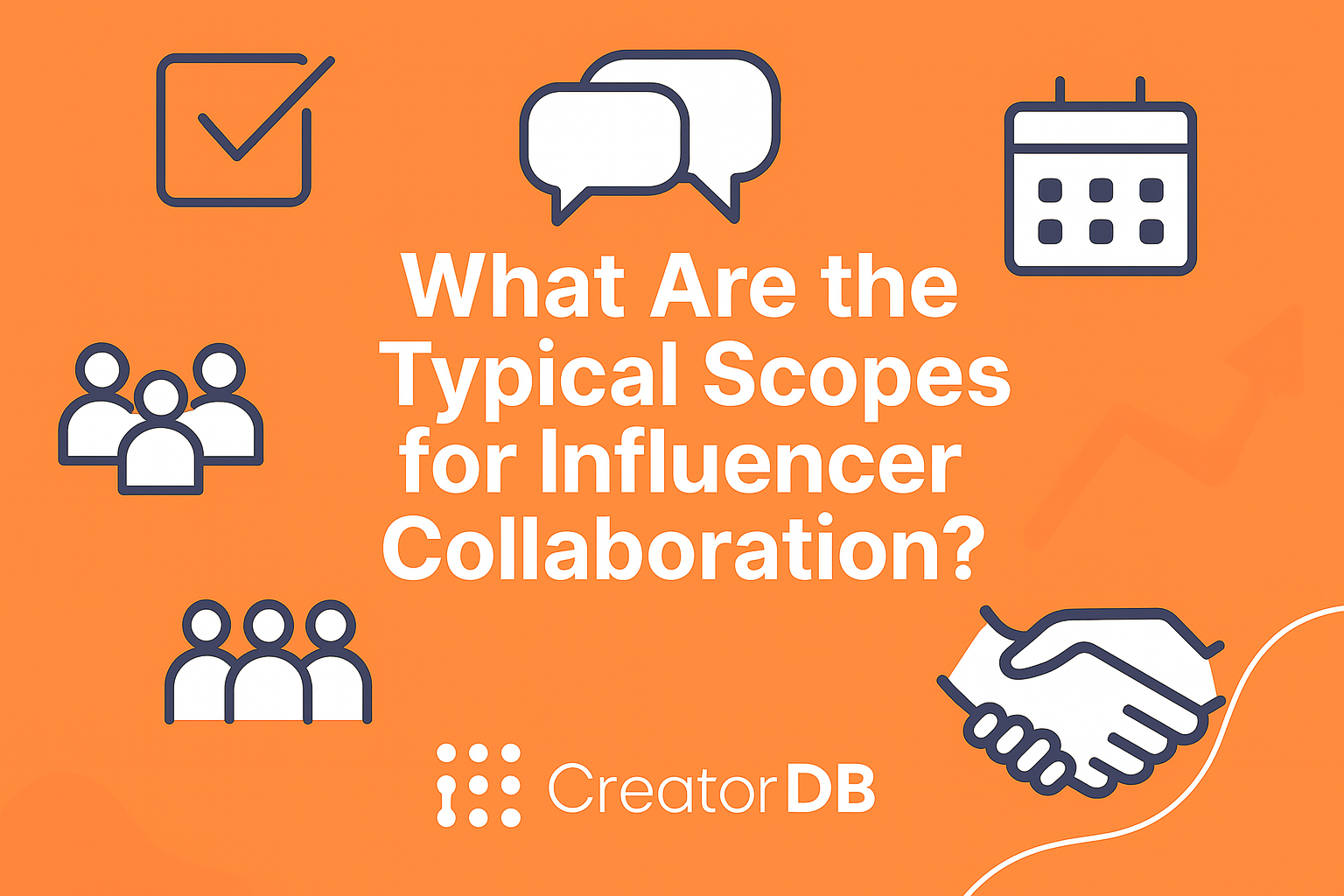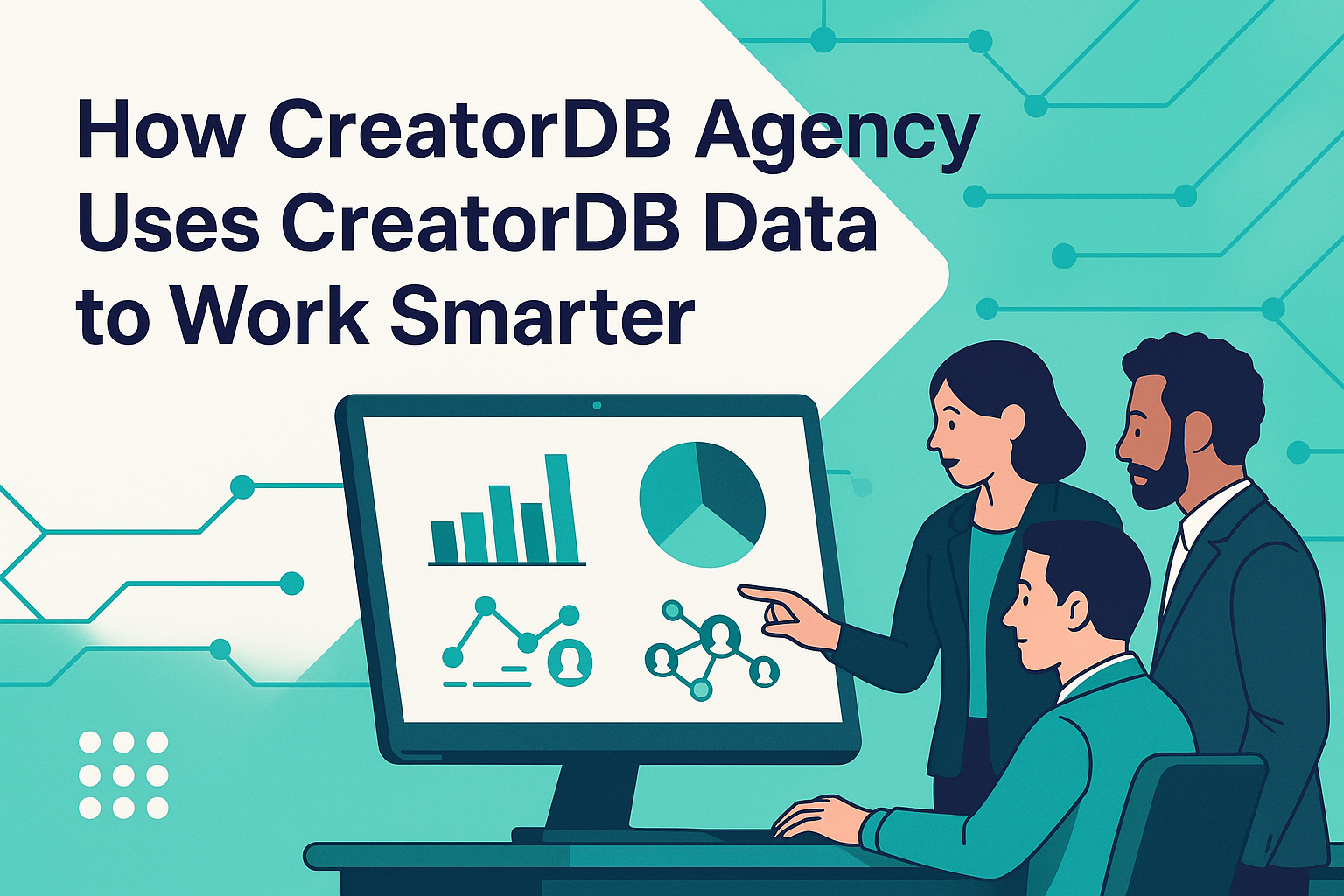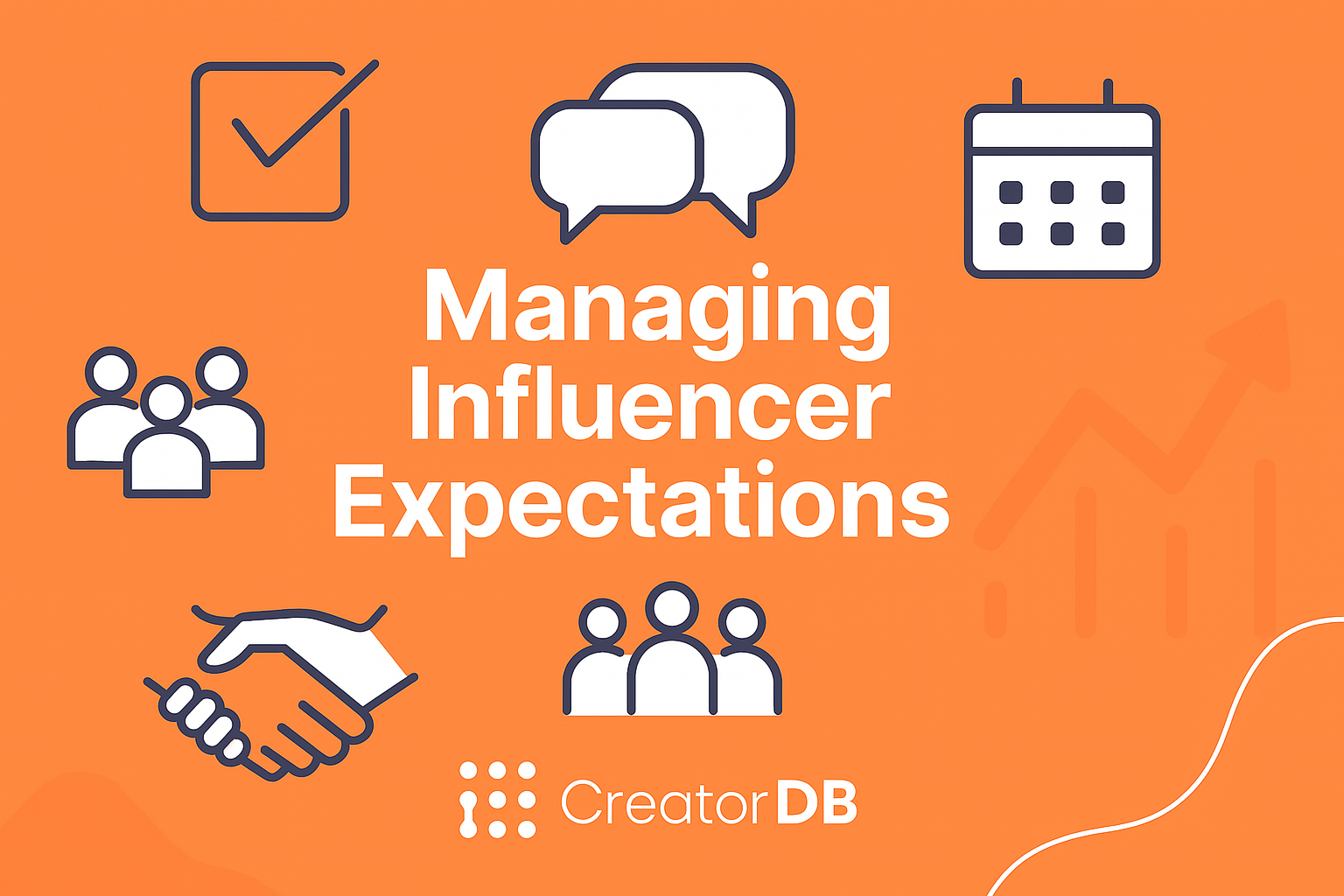You are partnering with an influencer and they have a presence on multiple social media, should you want them to cross-post the same content on all their accounts or should you want content specifically crafted for each platform? Both options have their strengths and weaknesses and this article will go through what they are and why you should keep both options in mind. By the end of it, you will know when to choose cross-posting and when not to.
By now, every marketer should be very familiar with influencer marketing and its advantages, after all, social media are becoming more popular than search engines when it comes to product discovery, and almost 3 in 4 people trust influencers when it comes to product recommendations.
But if you lived under a rock for the last 10 years here is why influencer marketing matters to you: influencers, or content creators, gathered a following online by publishing content around their passions and areas of expertise. By doing so, they have been able to establish a trusted connection with their followers that see them as reliable sources in their field. For marketers, this means that partnering up with the right influencers is going to give access to extremely segmented target audiences.
Influencers often focus their efforts, or they are successful, on one social media but have a presence on other platforms. This situation makes it possible for marketers to require them to post on multiple social media to obtain more exposure and capture a larger audience.
To take advantage of this opportunity one may be tempted to ask the influencer to just prepare one piece of media and publish it across all of their networks. While there is nothing inherently wrong with it this strategy can easily feel tone-deaf to the part of the audience that is not from the main platform.
To understand why this is the case, it’s important to know that each social media has a different tone and caters to different interests of the users: people visit Instagram for highly visual content, while if you spend much time on Twitter you are likely to be interested in short text content. From there is easy to see why the same content is unlikely to perform well when cross-posted to other platforms.
On the other hand, cross-posting present the advantage to be quick and doesn’t require additional work after the original piece of content has been prepared to allow it to cover multiple channels and keep the costs and time low. In certain situations, a campaign may be targeted to a specific channel but you may still want it to be spread to other channels to maximize reach while not developing new creatives for each social media.
As you can see choosing between cross-posting and creating content for each social media from scratch is not a choice devoid of nuance and should be something to be considered when designing any influencer marketing campaign. Important factors to consider that we will see in detail through the article are the objectives of the campaign and the platforms’ characteristics.
Why ask an influencer about cross-posting content?
Cross-posting is the practice of creating a single piece of content and using it across multiple social media. Can be done both by influencers and by brands on their owned channels but here we are specifically discussing the case of influencers cross-posting branded content across their accounts on behalf of a sponsoring brand.
Reach and exposure
Crossposting presents many advantages. Most notably it increases the reach and exposure of a campaign: since the average social media user is active on 6 different platforms covering as many of them as possible is going to help reach them multiple times and provide a longer-lasting and stronger impression of your brand. Concurrently each social media audience is slightly different and having branded content circulating to most social media platforms is going to ensure that it gets exposure to diverse audiences.
Time and cost efficiency
Another benefit is the efficiency both regarding production time and costs for the creator and the marketers. Using a single, or a few, creative make for a much shorter cycle when it comes to designing, creating, editing, and reviewing. By cross-posting the same content you can obtain very fast campaigns that embrace multiple channels but don’t require as much effort as carrying out different campaigns for each social media platform.
Speed of execution
Last but not least, cross-posting is perfect in those cases in which a brand may be afraid to present itself with a fragmented image and messaging. Dealing with different social media, each with its unique aspects and tones can be a challenge for many marketing teams: while trying to appease the quirk of each platform to better gain visibility one could easily lose sight of the brand image. Therefore, not differentiating a campaign to especially fit a platform but using material based on the brand’s core values across all social media can be an easy and effective way to deal with maintaining a solid and coherent brand identity.
Overall cross-posting offers an interesting option for any marketer that is looking to rapidly deploy a campaign that encompasses different domains and platforms. While it sacrifices tailored approaches to each different channel it has the advantage of being fast, cheaper, and delivering a unified look and feel of the brand.
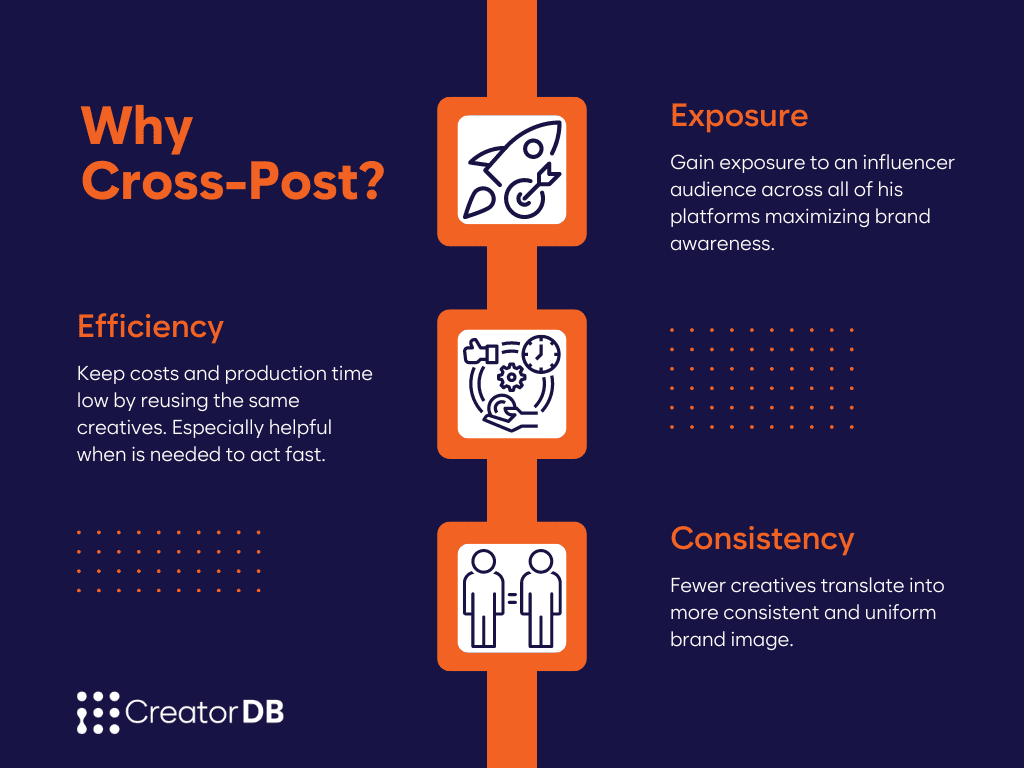
Why create unique content for each social media platform?
On the other hand, creating unique content for each social media is going to play into the uniqueness of the format and tone that each platform has. Many marketers are swearing at it. In a recent Hootsuite study, was found that the 18% of the marketers that prepare different content for each social media is also the segment with the highest confidence in the value of their content.
Each platform has specific limits and rules around what kind of content can be shared: famously Twitter limits the number of characters to 280 for each post. Concurrently each social media algorithm is going to react differently to different types of content translating into more or less exposure of it to the audience depending on the platform preferences.
It should be clear by now that creating unique content for each platform is going to allow it to be fitted for the specific audience and taste of the platform itself.
But how does creating unique content for each platform translate to benefiting your campaign? There are three main ways it can be a real game changer for your marketing efforts:
Fit the platform
By creating content tailored towards each platform-specific feature and with in mind the audience’s characteristics and tastes users are more likely to engage with your content. Being able to create content that is not just relevant to your brand and your marketing goals but that is also fitting in the culture and liking of the specific audience it approaches would make it more relevant to that audience and entice engagement in the form of views, likes, and comments.
Authenticity
Content especially crafted for specific platforms increases the feeling of authenticity and resonance with the audience. As we saw before the average social media user is on multiple platforms. If you promote on different platforms is likely that the same user will come across more than one of your messages.
Having each of the messages purposefully crafted for the platform it is shared on is going to give them a more humane look at the brand itself which would be presented slightly differently each time. Furthermore, small variations in the messaging or the approach of each message have the chance to strike a different cord and allow one to engage with the same audience in different ways maximizing your potential success.
Platforms’ strengths
Each platform’s unique strengths can be used to achieve optimal results for your campaign if played correctly. And having content specifically created with a platform in mind is going to optimize your results by offering your audience an almost 360-degree view of your product.
For example, you may want short and direct videos about the most eye-catching parts of your product on TikTok, where short video content is king, but a long and in-depth review of all your product features and the influencer’s personal opinions for a video posted on YouTube, where long format video content is going to perform best. Similarly, Instagram is the country of high-quality pictures, and short video content, while Facebook allows and boosts long descriptive captions.
In conclusion, creating content specifically crafted for each platform is going to be a winning choice in terms of engagement, perceived authenticity, and effective messaging. All these benefits come with a non-zero cost: longer times of production obviously and majorated costs due to the creation of new content for each platform.
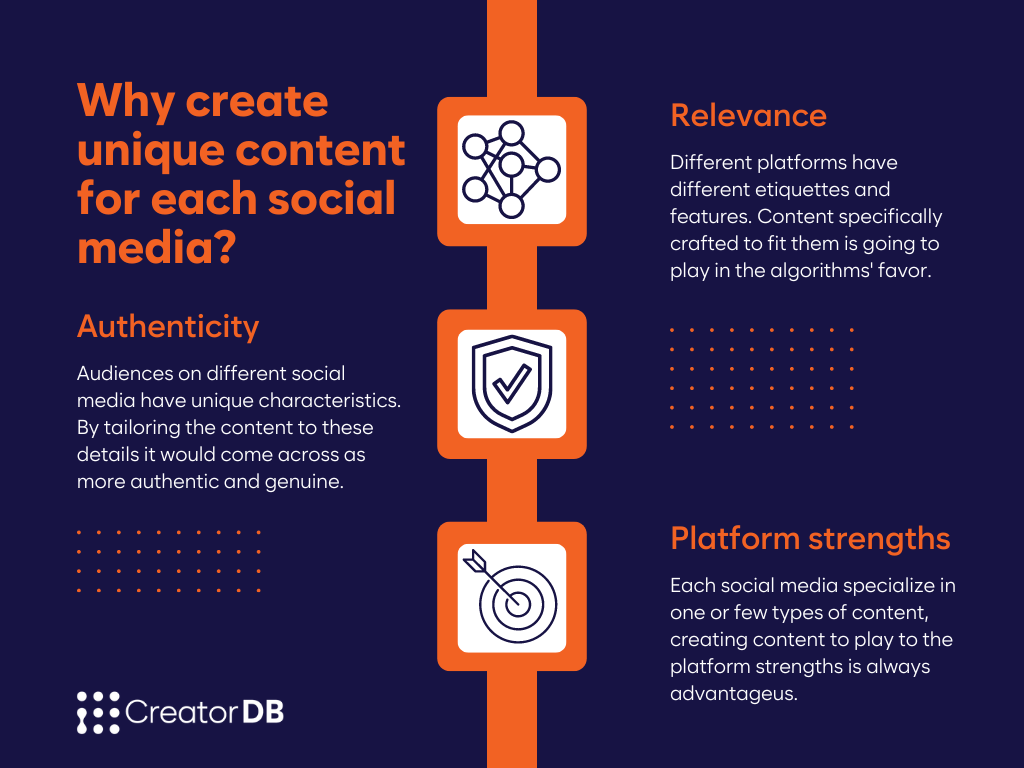
Cross-posting or not cross-posting
While both cross-posting and not cross-posting have their advantages and disadvantages jumping to any conclusion is important to know and understand what are the factors that will weigh heavily on the outcome of your campaign and the success of the cross-posted, or not cross-posted content.
First of all, is important to keep in mind audience demographics, after all, they are who is going to consume the content. Understanding how they use different social media platforms, which they use and which they don’t is going to be an important first step.
For example, you may decide to cross-post content to a platform that has a low concentration of your target audience while creating new content for those platforms where they most often hang out. Concurrently is important for you to know what are their preferences in content: a platform may be mostly about video or text but certain communities may use them for other features not as popular.
Taking your time and learning about the communities your marketing campaigns are targeting is never a waste of time.
Platforms limitations
Learn about the limitations of each platform and consider how they are going to be fitted with the content you want to share on them, especially if is content created for another platform. There is always a workaround for those limitations: a long text could be split into many different tweets to fit the character limit and similar approaches can be taken for videos as well. But is important to consider how that will fit in the larger picture of the campaign and the brand image.
Brand identity
The campaign goals and how the guidelines around messaging and brand identity should be another point to be taken into consideration when deciding if you want to cross-post or is better to generate original content for each social media. As we discussed before the fewer creatives are used easier it is to maintain a unified and coherent brand image at the expense of fitting in with the etiquette of each platform.
Influencers’ approach
Finally is important to take into consideration the differences that each influencer has in how they approach and use the different platforms: they may be not active on some platforms, making it superfluous for any brand to require them to post through those channels. In other cases, it may be that certain channels are completely dedicated to specific parts of their image and therefore more or less desirable for a brand to be promoted there.

Find Your
Perfect Influencer
Match Instantly
Cross-posting best practices
Hybrid approaches to cross-posting
While is important to decide what to do about cross-posting or creating unique content for each platform is to be kept in mind that they are not mutually exclusive by design. While it may seem counterintuitive a hybrid approach can be the best solution in many cases.
For example, a TikTok video can be posted as an Instagram Reel with no difficulty and the creation of unique content can be reserved for other platforms where short video content is not going to perform as well.
A content waterfall can be another way to approach it. While production is focused on a major piece of content specifically tailored for one platform, the other platforms receive content related to the main one but adapted to their kinks.
For example, the main piece being a long-form review video for YouTube, highlights of the video can be edited together into a short video to go on TikTok and Instagram while photos and written versions of the review can be used to be posted on Facebook and Tumblr.
With this approach is possible to keep the production time and costs low while still providing a unique experience to the user of each platform.
Experimenting with cross-posting
Base your approach on the best information available to you. While both strategies have pros and cons your decision should be based on how they work for your brand in the specific. Therefore, is important to conduct tests on both approaches and evaluate how they affect different metrics.
This way will be truly possible to understand which approach is the most effective for the needs of the brand. Once there are data and a clear understanding of how different approaches can help the brand then is time to act.
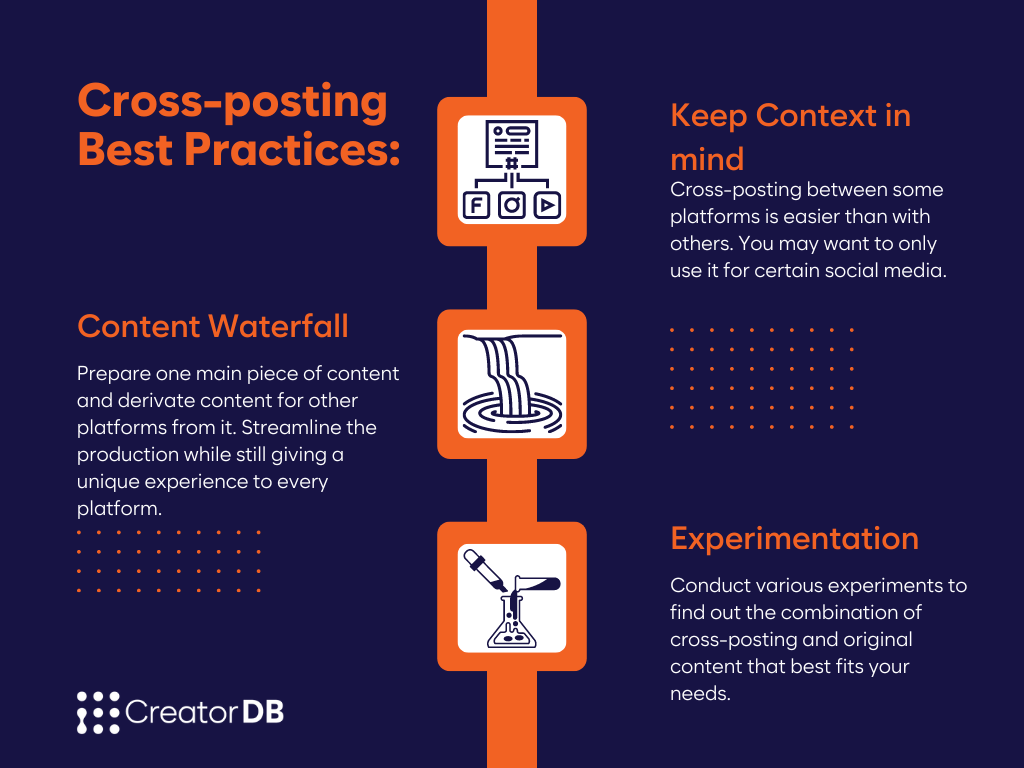
Conclusion
The decision between cross-posting content or creating unique content for each social media platform is not a simple one. Both approaches have their strengths and weaknesses, and it’s crucial to consider various factors before making a final decision.
Cross-posting offers the advantage of increasing campaign reach and exposure. By leveraging multiple social media platforms, you can engage diverse audiences and leave a lasting impression on your brand. It also provides efficiency in terms of production time and costs, allowing for rapid campaign deployment. Moreover, cross-posting ensures a unified brand image across different platforms, maintaining a solid and coherent identity.
On the other hand, creating unique content for each platform plays into the specific format and tone of individual platforms, tailoring it to the audience’s characteristics and preferences. This approach increases engagement, authenticity, and resonance with the audience. It allows you to strike different chords with the same audience, maximizing your potential for success. Furthermore, leveraging each platform’s unique strengths optimizes your campaign results by providing a holistic view of your product to the audience.
Ultimately, the decision should be based on various factors, including audience demographics, platform limitations, campaign goals, and influencer preferences. It’s important to understand how your target audience uses different platforms and their content preferences. Additionally, considering the guidelines around messaging and brand identity is crucial in maintaining a unified brand image.
While cross-posting and creating unique content may seem mutually exclusive, a hybrid approach can often be the most effective solution. Combining elements of both strategies allows for flexibility and optimization. For example, adapting content from one platform to another or creating a content waterfall approach can be viable options.
To make an informed decision, it’s advisable to conduct tests and evaluate metrics to understand which approach works best for your brand. Each brand’s unique needs and objectives should guide the decision-making process. By leveraging the best information available and analyzing the impact on different metrics, you can determine the most effective approach for your influencer marketing campaigns.
In the dynamic landscape of influencer marketing, staying adaptable and open to experimentation will lead to refined strategies that resonate with your audience and drive meaningful results.



